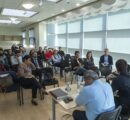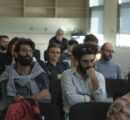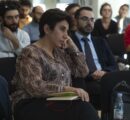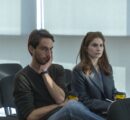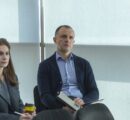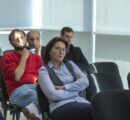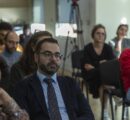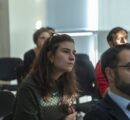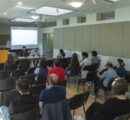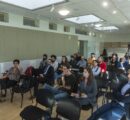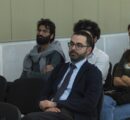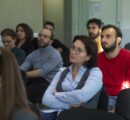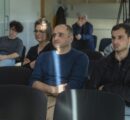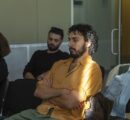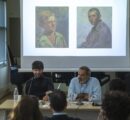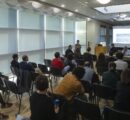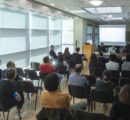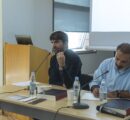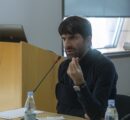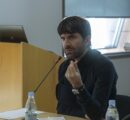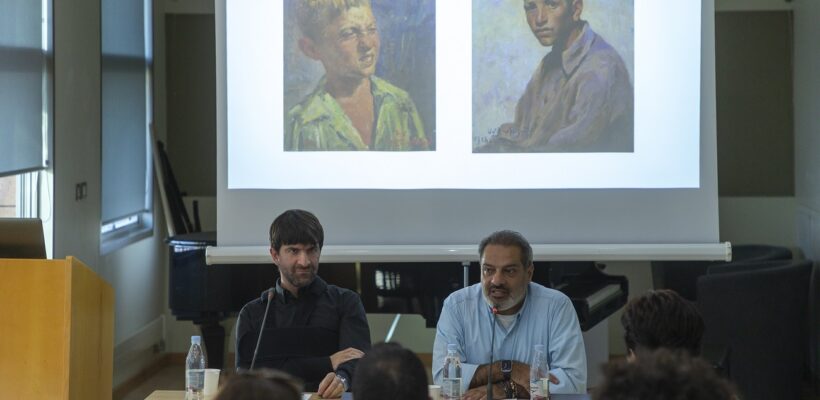
CHSS Hosts Discussion on “The City of Orphans” Book
3 min readYEREVAN, Armenia — The College of Humanities and Social Sciences (CHSS) of the American University of Armenia (AUA) and the Ashot Johannissyan Research Institute in the Humanities co-hosted a series of discussions about research projects implemented at the Johannissyan Institute. At the core of these research endeavors is the express intent to tackle complex issues of modernization within Armenian social and cultural life. The inaugural session held on October 23 aimed to grow a deeper understanding of the topics involved.
This first panel discussion focused on the theme of “Orphanage and Modernity,” as covered in Nora N. Nercessian’s book “The City of Orphans: Relief Workers, Commissars and the ‘Builders of the New Armenia’ Alexandropol/Leninakan 1919-1931.” This segment featured Dr. Vardan Azatyan from Johannissyan Institute and CHSS Associate Professor Dr. Asbed Kotchikian.
At the beginning of the event, CHSS Dean Dr. Hagop Yacoubian extended warm greetings to the attendees and explained the purpose of these book discussions, delineating their significance not only academically, but also for creating the appropriate platform for developing insight within our socio-political lives. He also reiterated the co-host’s aim and emphasis on cultivating critical thinking, which duly aligns with AUA’s core values. Dr. Yacoubian expressed gratitude to those involved in organizing the event, including Dr. Siranush Dvoyan, Dr. Azatyan, Assistant to the AUA President on Academic Affairs Dr. Vahram Ter-Matevosyan, and the professors in the panels.
Subsequently, Dr. Dvoyan, adjunct assistant professor at AUA and a Member of the Council at the Ashot Johannissyan Research Institute in the Humanities, sketched the project’s inception and overall journey. She then expressed special appreciation to the hosts of the event for not only recognizing the value of research and analytical work, but also offering a platform for its exposure. Dr. Dvoyan gave an overview of the book, revealing that it had initially appeared in English in 2016, then translated into Armenian, enriched with historical references and accounts from Armenian archives, which further bolsters its historical accuracy and merit.
Next, Dr. Azatyan initiated the book discussion by shedding light on the familiar discernment of the word “orphan” — commonly associated with sadness, sympathy, and sorrow. He emphasized the book’s unique mission to challenge that and describe orphans as individuals with intricate personalities. He applauded the book’s historical and scientific rigor, highlighting its portrayal of orphan life as a profound self-revelation by the author. Furthermore, Dr. Azatyan provided valuable insight into the book’s historical backdrop, revealing that at the dawn of the 20th century, in the location now known as Gyumri, numerous American orphanages were opened, ranking among the largest globally. He emphasized that this association between Armenians and orphans has deep roots in the troubled history of the Armenian people, encompassing events like the Armenian Genocide, numerous conflicts, and struggles for survival. This connection was particularly visible in the portrayal of Armenians in American and European news narratives.
Dr. Kotchikian then offered his own perspective on the book, emphasizing its pivotal objective of serving as a historically accurate work despite the multiple stages of writing, approval, and publication. He commended the book’s role as a voice for orphans to express their concerns, lifestyles, and societal challenges. He noted Nercessian’s commitment to incorporating direct quotations from the orphans, distinguishing the book from typical narratives. Furthermore, Dr. Kotchikian addressed a common misconception about the book, clarifying that it is not about the Armenian Genocide, but rather a multifaceted exploration of what followed. It delves into the transformation from orphanhood to citizenship, raising questions about which citizenship these individuals would acquire and whether they would serve as ambassadors of the West or become full-fledged citizens of the Soviet Union. He proceeded by highlighting the book’s unique focus on a relatively less-discussed period — Armenia’s first ten years in the Soviet Union. Moreover, Dr. Kotchikian underscored one of the book’s most significant merits: the inclusion of specific names, eschewing generalized terms or fabricated characters. This approach enhances the reader’s connection to the book, grounding readers in the personal experiences described. He examined the purpose of dedicating the fourth section of the book to listing the names, indicating that it serves as a valuable source of information that confirms the historical narrative’s completeness and accuracy. The list remains unfinished, Dr. Kotchikian concluded, because, despite exhaustive data collection efforts, historical narratives are never truly absolute nor complete; there are always more untold stories waiting to be shared.
The discussion was followed by an engaging Q&A session, which provided the opportunity for guests, students, and faculty members to delve deeper into the historical context and literary approach of the book.
Founded in 1991, the American University of Armenia (AUA) is a private, independent university located in Yerevan, Armenia, affiliated with the University of California, and accredited by the WASC Senior College and University Commission in the United States. AUA provides local and international students with Western-style education through top-quality undergraduate and graduate degree and certificate programs, promotes research and innovation, encourages civic engagement and community service, and fosters democratic values.


